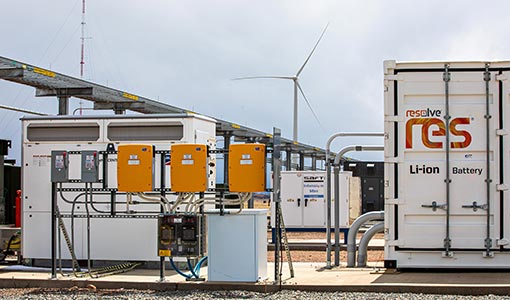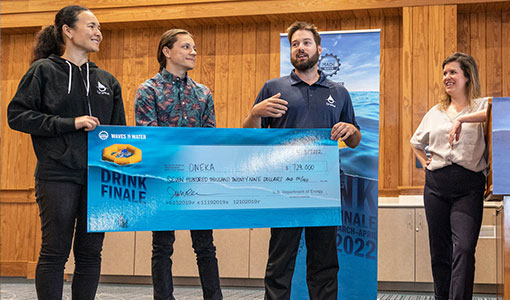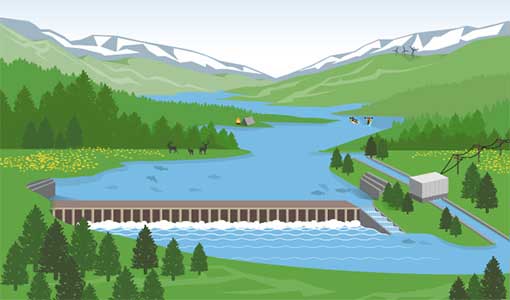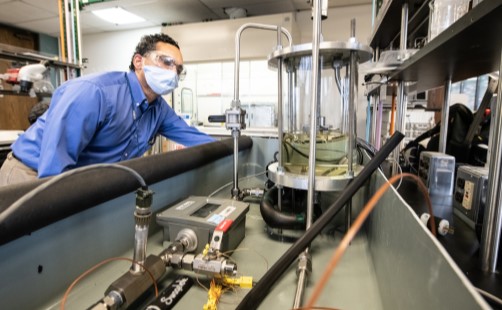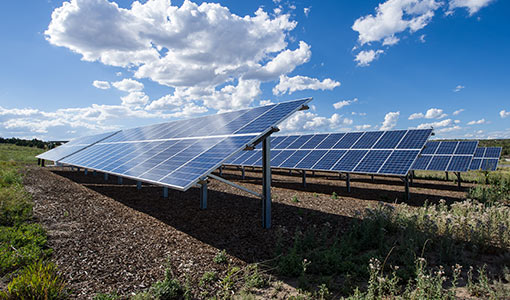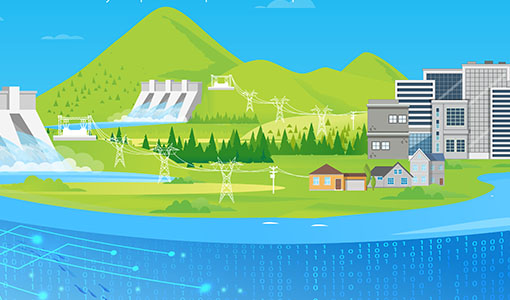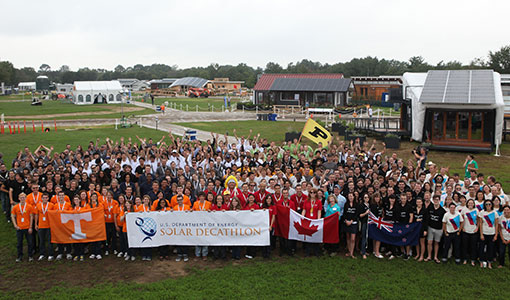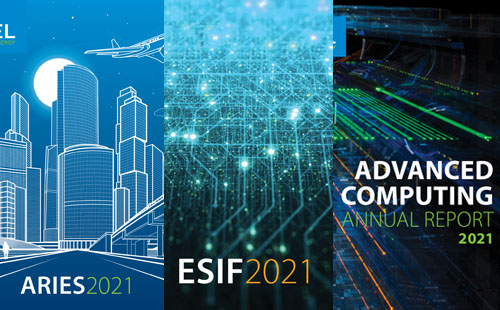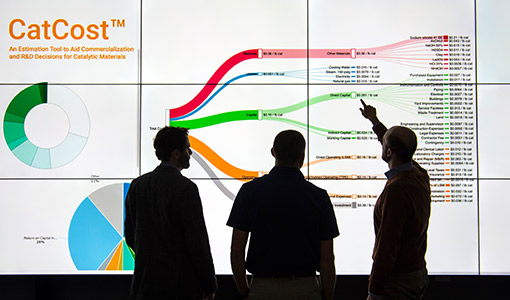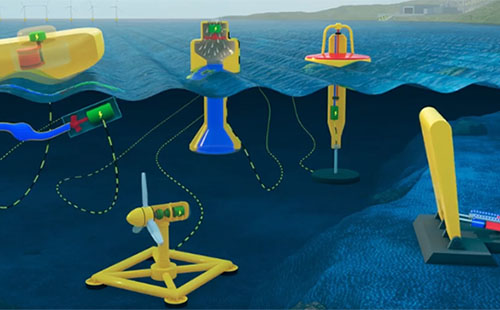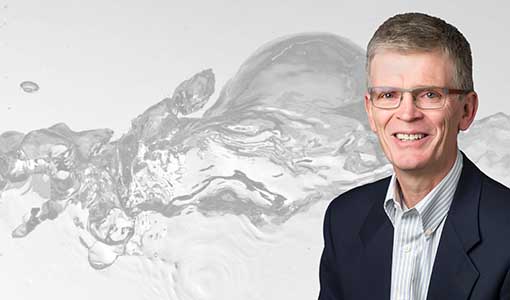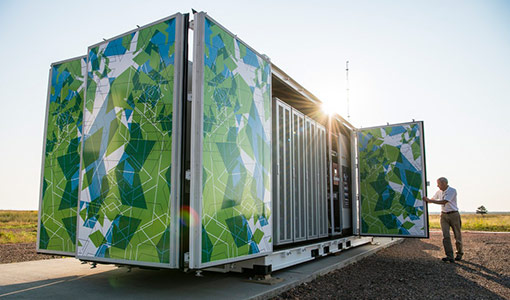April 2022
News Release: 2022 NREL Industry Growth Forum Awards Cleantech Innovators
NREL gave awards to five top cleantech innovators at the 2022 NREL Industry Growth Forum (IGF) on April 13-14, 2022.
Storage Futures Study: Key Learnings for the Coming Decades
Energy storage will likely play a critical role in a low-carbon, flexible, and resilient future grid, the Storage Futures Study (SFS) concludes.
NREL Researchers Plot Energy Storage Under Our Feet
Computer modeling done by scientists at NREL and Colorado School of Mines confirmed the feasibility of using depleted oil and gas wells as a space for energy storage.
News Release: Waves to Water Prize Announces Grand Prize Winner and Celebrates the DRINK Finale
Today, the U.S. Department of Energy's Water Power Technologies Office and NREL, East Carolina University's Coastal Studies Institute, and prize competitors celebrated the finale of the Waves to Water Prize--a competition designed to accelerate the development of small, modular, wave-energy-powered desalination systems.
NREL Senior Scientist Mou Paul Receives Two Prestigious Chemistry Awards
NREL Senior Scientist Mou Paul has been selected as the recipient of two prestigious awards—the 2021 Industrial and Engineering Chemistry Division Fellow Award and the 2021 American Institute of Chemical Engineers Industrial Progress Award.
The Future of Water Power: 2023 Hydropower and Marine Energy Collegiate Competitions Open for Applications
The inaugural Hydropower Collegiate Competition and third annual Marine Energy Collegiate Competition calls on the next generation workforce to help reach a clean energy future.
Keeping It Cool With Power Electronics and Electric Machines System Designs
NREL researchers are revolutionizing clean energy mobility beyond light-duty electric vehicles by building advanced power electronics systems that control the flow of electricity to propel large and advanced electric machines, including those used in planes, trains, and heavy-duty transportation.
News Release: NREL Identifies Abundant Renewable Energy Resources as Key to Mexico's Clean Energy Ambitions
NREL released an in-depth report on the potential for clean energy development in Mexico, finding that Mexico is ideally poised to become a clean energy powerhouse.
Q&A With Parthiv Kurup: A Practical Captain To Helm the Clean Energy Transition
As part of the Manufacturing Masterminds Q&A profile series, Parthiv Kurup shares how his analyses are streamlining manufacturing processes to reduce the sector's energy consumption while reducing costs.
Tapping Hydropower's Potential: New Hydropower Prize Challenges Innovators to Improve Grid Reliability and Resiliency
In partnership with the National Renewable Energy Laboratory, the U.S. Department of Energy's Water Power Technologies Office has launched the Hydropower Operations Optimization (H2Os) Prize to support a reliable, resilient grid. The Phase 1 submission window closes on May 20, 2022.
Solar Decathlon Turns 20!
2022 marks the 20th anniversary of the U.S. Department of Energy Solar Decathlon, an international collegiate competition that has helped popularize renewable energy and energy efficiency technologies, while training the clean energy workforce of tomorrow.
NREL Gets Electric Off the Ground With R&D, Analysis on Battery-Powered Aircraft and Seacraft
Some have called 2023 the "year of the electric vehicle (EV)," noting the dozens of new battery-powered models set to come available in the United States across all vehicle classes.
The Year in Review
The recently released 2021 annual reports for the Energy Systems Integration Facility (ESIF), the Advanced Research on Integrated Energy Systems (ARIES) research platform, and Advanced Computing offer a snapshot of the impact of NREL research: highlights from the diverse projects, publications, patents, partnerships, and technical breakthroughs realized in the last year.
March 2022
NREL Senior Research Fellow Honored for International Leadership and Innovation in Energy Chemistry
NREL Senior Research Fellow Bob McCormick was recently recognized with one of the highest honors by the American Chemical Society, known as the Henry H. Storch Award in Energy Chemistry for his research on alternative and low-carbon fuels, including the chemistry of fuel-engine interactions.
CatCost Online Tool Offers Insight Into Catalyst Manufacturing Cost and Environmental Impact
Scientists from NREL's Catalytic Carbon Transformation and Scale-Up Center have sought to reduce barriers to early-stage catalyst cost estimation by developing CatCost, a free and publicly available cost estimation tool that aims to equip researchers with the information they need to make informed R&D decisions.
Ocean Energy? River Power? There Is a Toolkit for That
A newly revamped software offers marine energy developers a way to analyze how well their technology might perform in various ocean and river sites.
Amazon Joins NREL-Led BOTTLE Consortium To Help Change the Way We Recycle
A new collaboration between Amazon and NREL-led BOTTLE Consortium could be a major step toward developing solutions to global plastic pollution.
Harnessing Hydropower To Achieve a Sustainable Future
NREL Hydropower Technical Lead Greg Stark reflects on how the conversation around hydropower is changing and NREL is honored to be part of it in 2022.
Battery Research Tackles New Challenges for Behind-the-Meter Stationary Storage Systems
Researchers at NREL are leading the development of new lithium-ion (Li-ion) battery designs specific to stationary storage requirements.
More Power to the Women
For Women's History Month 2022, the NREL marine energy and hydropower groups are taking a look at the work of six NREL women who are interested in renewable energy technologies, specifically water power technologies. Here are the second three.
Last Updated May 28, 2025


